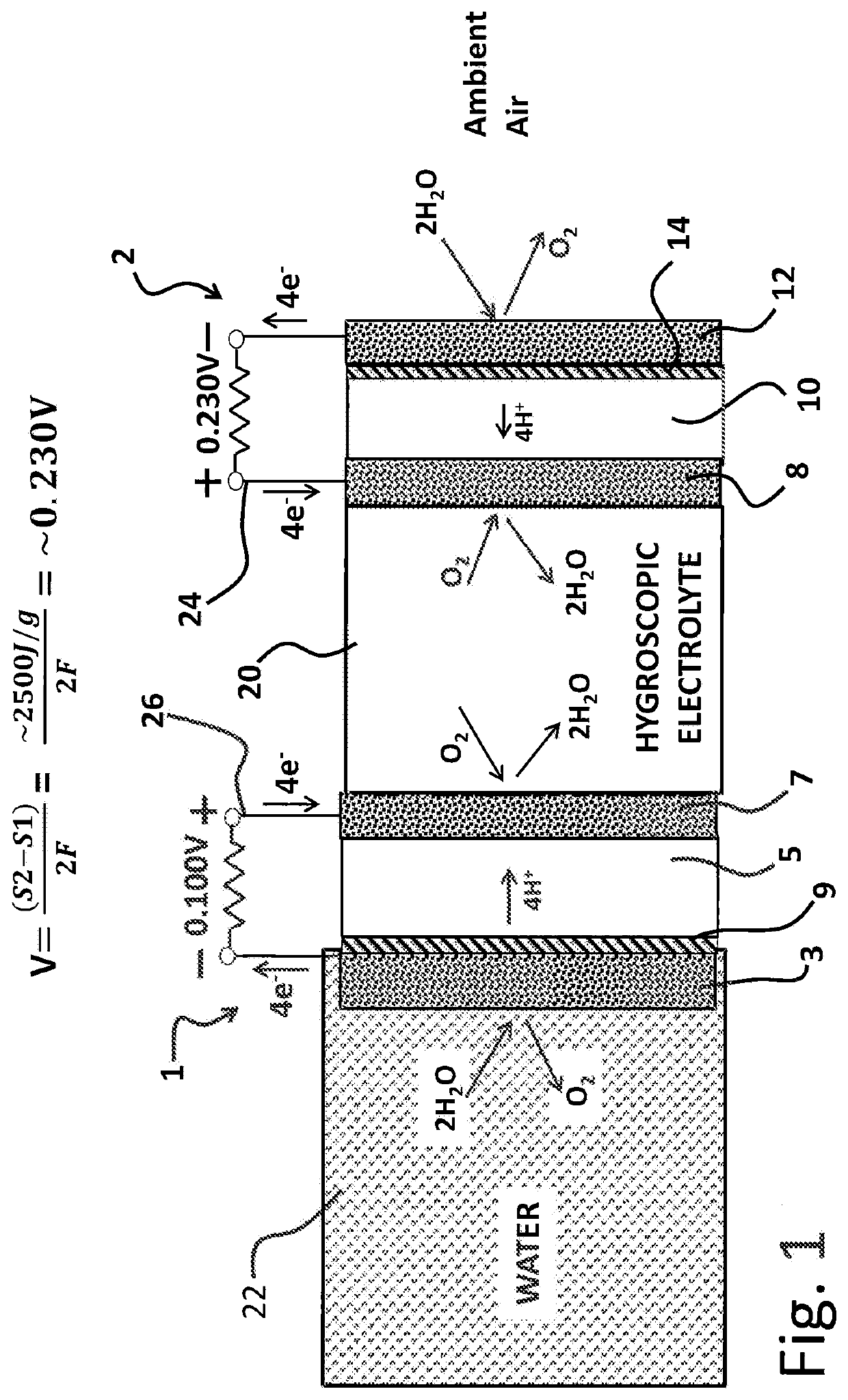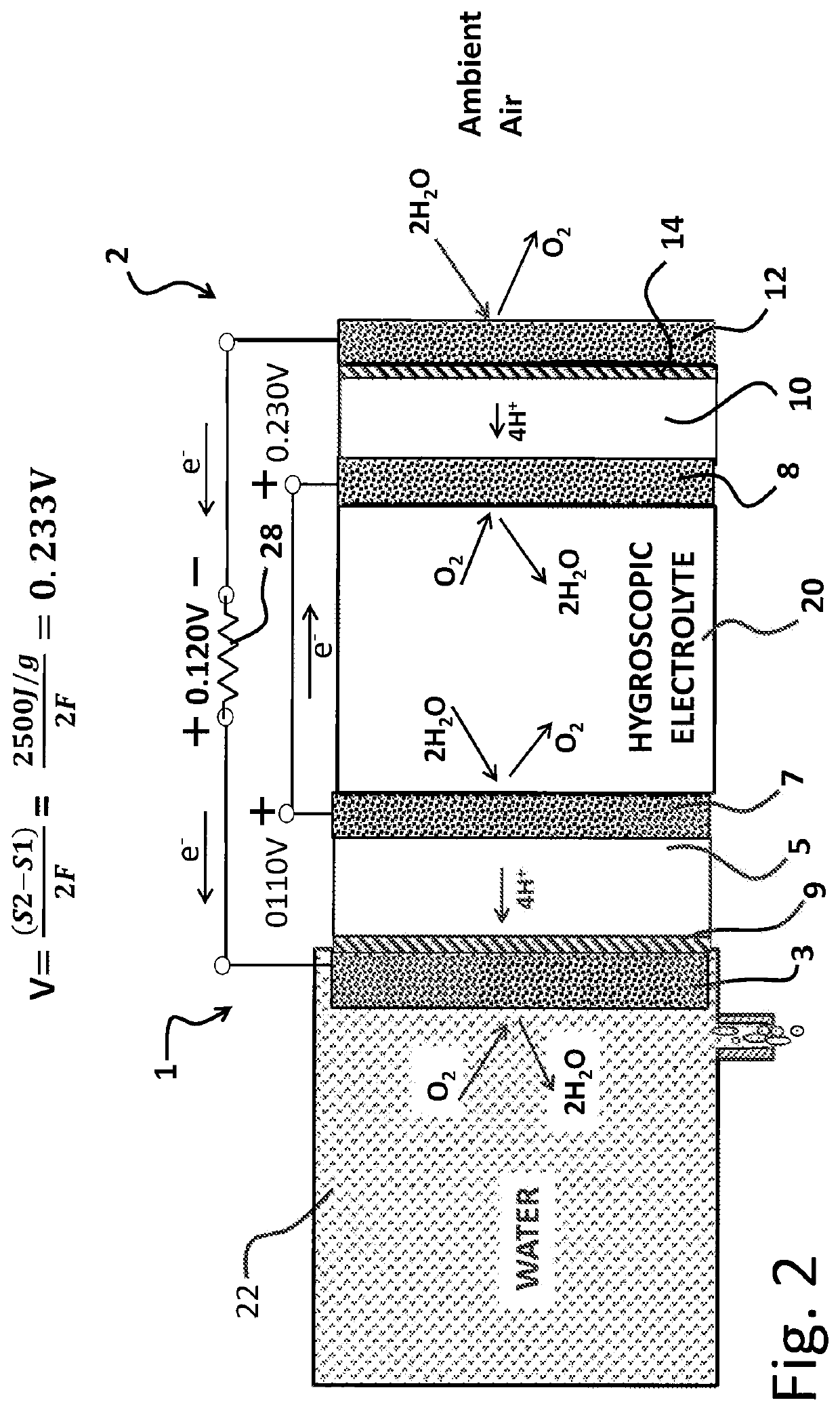Johnson power generator
a technology of power generators and johnson power generators, which is applied in the direction of electrochemical generators, fuel cells, electrical equipment, etc., can solve the problems of limited operation on cyclic variations in ambient water vapor pressure, limited applicability of hygroscopic solutions, and limited practicality of such devices
- Summary
- Abstract
- Description
- Claims
- Application Information
AI Technical Summary
Benefits of technology
Problems solved by technology
Method used
Image
Examples
Embodiment Construction
[0024]FIG. 1 shows the electrochemical potentials of two back-to-back, proton conductive, membrane electrode assemblies sandwiching and each having one its electrodes in contact with hygroscopic first electrolyte 20. First membrane electrode assembly (MEA) 1 is comprised second proton conductive electrolyte membrane 5 sandwiched by first electrode 3 and third electrode 7. It optionally includes first hydrogen permeable barrier to molecular water 9. First electrode 3 is exposed in in contact with water and third electrode 7 is in contact with first hygroscopic electrolyte 20. Similarly, second membrane electrode assembly (MEA) 2 is comprised third proton conductive membrane 10 sandwiched by fourth electrode 8 and second electrode 12. It optionally includes second hydrogen permeable barrier to molecular water 14. Electrodes 12 is exposed to the ambient air which contains water vapor and electrode 8 is in contact with hygroscopic electrolyte 20.
[0025]MEA 2 are shown as having higher el...
PUM
| Property | Measurement | Unit |
|---|---|---|
| voltage | aaaaa | aaaaa |
| electrical power | aaaaa | aaaaa |
| electrochemical potential | aaaaa | aaaaa |
Abstract
Description
Claims
Application Information
 Login to View More
Login to View More - R&D
- Intellectual Property
- Life Sciences
- Materials
- Tech Scout
- Unparalleled Data Quality
- Higher Quality Content
- 60% Fewer Hallucinations
Browse by: Latest US Patents, China's latest patents, Technical Efficacy Thesaurus, Application Domain, Technology Topic, Popular Technical Reports.
© 2025 PatSnap. All rights reserved.Legal|Privacy policy|Modern Slavery Act Transparency Statement|Sitemap|About US| Contact US: help@patsnap.com



